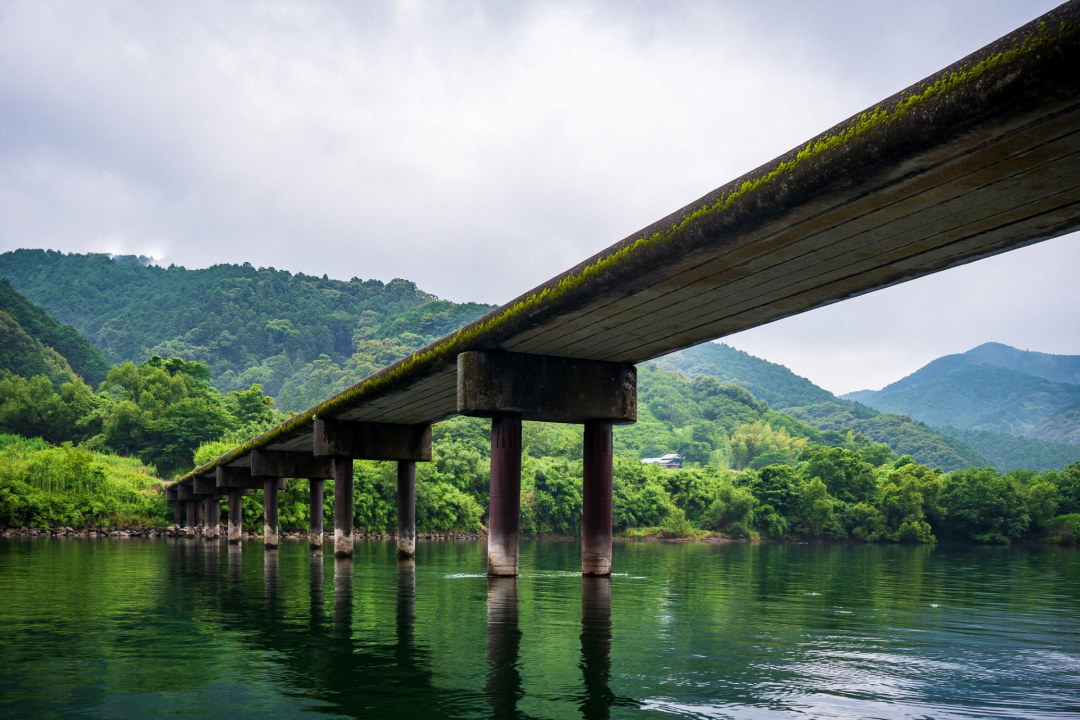
- TOP
- Itineraries
- Shikoku(itinerary)
- Discover Kochi’s Shimanto Region on the Rail Less Traveled
Discover Kochi’s Shimanto Region on the Rail Less Traveled
-
Introduction to Shimanto
It wouldn’t be hard to describe Shimanto as one of the last remaining wild places in Japan. On the southwestern side of Japan’s Shikoku Island, which was itself only accessible by boat and airplane until 1988, this rural part of Kochi Prefecture remains largely undeveloped, covered with vast swaths of forests covering the mountains flanking both sides of the mighty Shimanto River, the last free-flowing river in Japan.
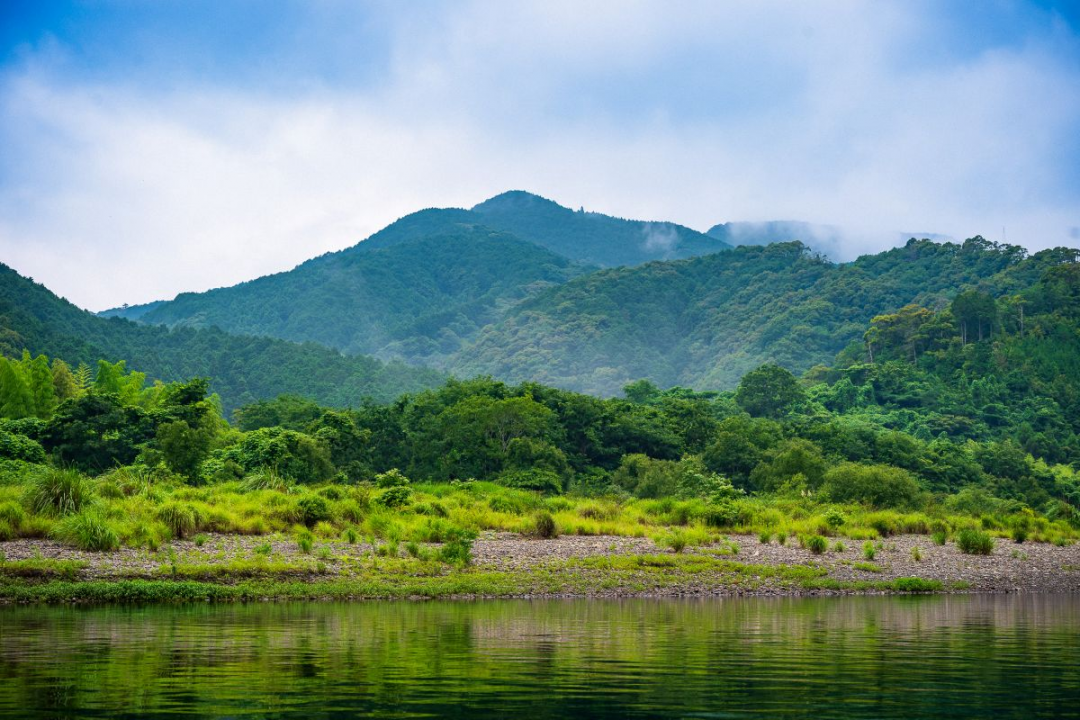
View from Shimanto river cruise
The most scenic way to enjoy a journey to Shimanto is by rail. Board a comfortable train and travel with ease through the mountains and coastline of Kochi’s Takaoka district, perhaps stopping for a tempting meal from the prefecture’s famous fresh seafood or locally produced pork.
-
Adventures on JR Shikoku's Unique Kochi Trains
Exploring Kochi by train
With limited time to explore Kochi, one of the best uses of your time may be to experience the beautiful scenery from a comfortable seat on one of JR Shikoku’s unique trains that run through the prefecture. Some of these lines are made for sightseeing and not simply to transport you from one place to another. You might even get to sample the local cuisine along your journey without ever leaving the train.
The Elegant Shikoku Tosa Toki no Yoake no Monogatari
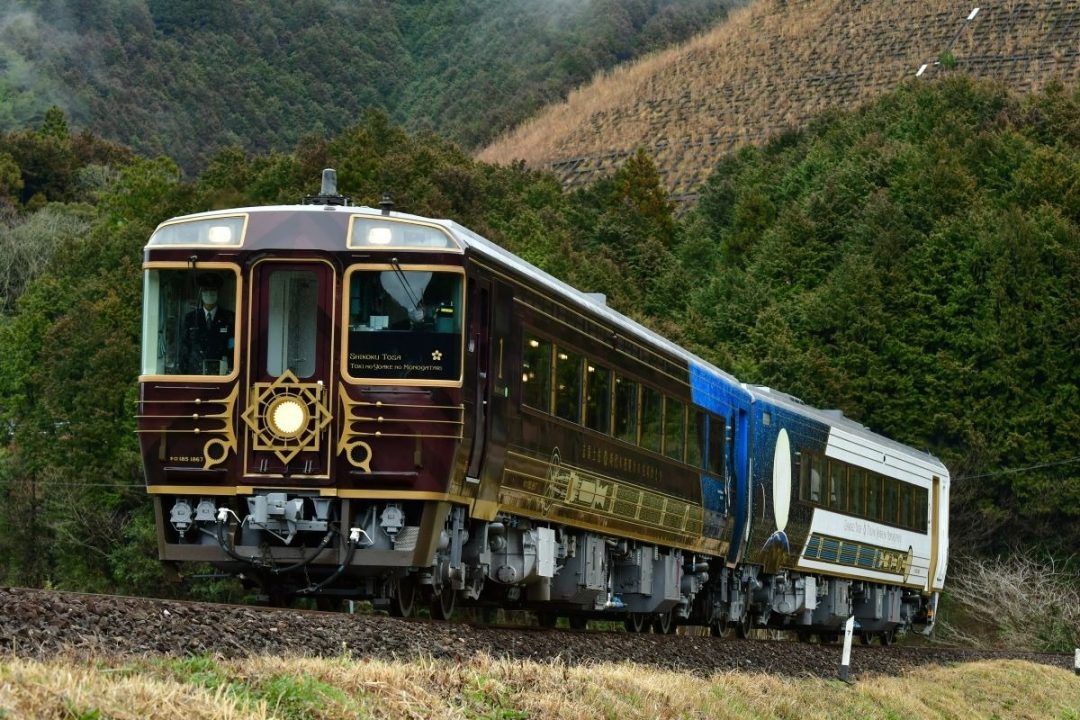
The Shikoku Tosa Toki no Yoake no Monogatari passes through Kochi’s beautiful landscapes.
One way you can do that is by reserving a seat on the elegant Shikoku Tosa Toki no Yoake no Monogatari train, which translates roughly to “Tales from the Dawn of an Era in Tosa, Shikoku,” with Tosa being the old name of Kochi Prefecture. Fittingly, this sightseeing train begins its journey near Kochi Castle, one of the last 12 original castles remaining in Japan. From there, it takes a leisurely paced ride to Kubokawa, with a brief stop at Tosa-Kure Station, where the Taisho-Machi Fish Market is located. If you are unable to make a reservation in this direction, the train also travels the route in reverse later in the day, from Kubokawa to Kochi.
Two distinctly decorated cars make up this train, the Kurofune (Black Ship) and Sorafune (Sky Ship). Both cars are luxuriously outfitted with custom interiors featuring wood and leather, with seats that face the windows, allowing you to enjoy the view throughout the entire journey. Reserving a lunch set is an option, but highly recommended, as it consists of exquisitely presented lunch boxes with small servings of several Kochi delicacies, perfect for enjoying along the way to your destination.
The unique Yodo Line Three Brothers
The Yodo Line runs along the Shimanto River, connecting Kubokawa to Uwajima City in the adjacent prefecture of Ehime. This line features not one but three unique trains, affectionately known as the Yodo Line Three Brothers. Two of the three trains are normal trains made in unique designs; one pays homage to the mythical “kappa” that supposedly live in bodies of water and the other to the original model of the Shinkansen bullet train. The third is a truly unique experience, a train with an open-sided trolley car to enjoy the natural beauty along your ride.
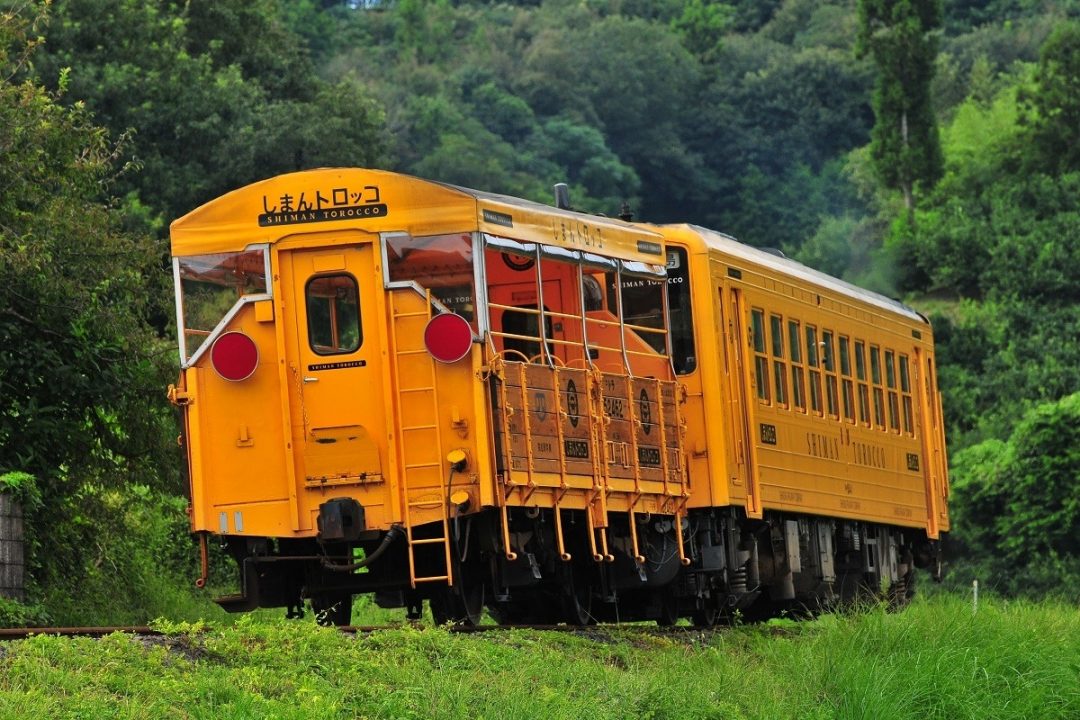

The uniquely designed “Yodo Brothers” trains run along the mountainous route between Kubokawa and Ehime Prefecture.
-
On the Trail of Shimanto's Rich Cuisine
Kochi’s most famous dish
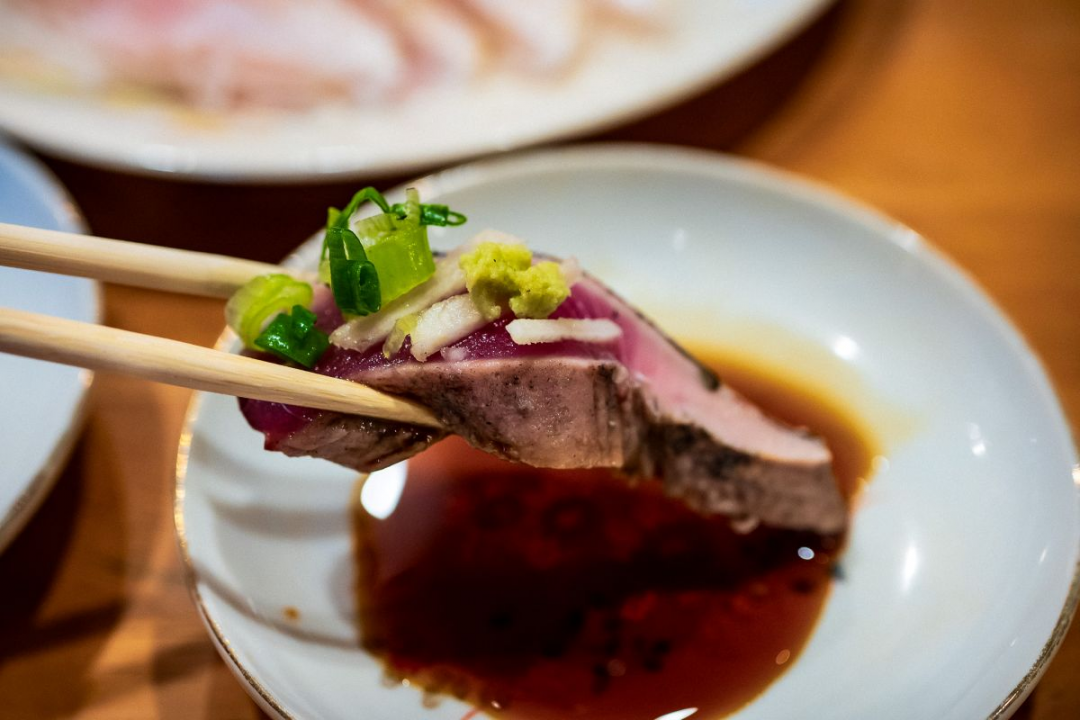
Katsuonotataki, Tosa’s specialty, served with various herbs and flavors
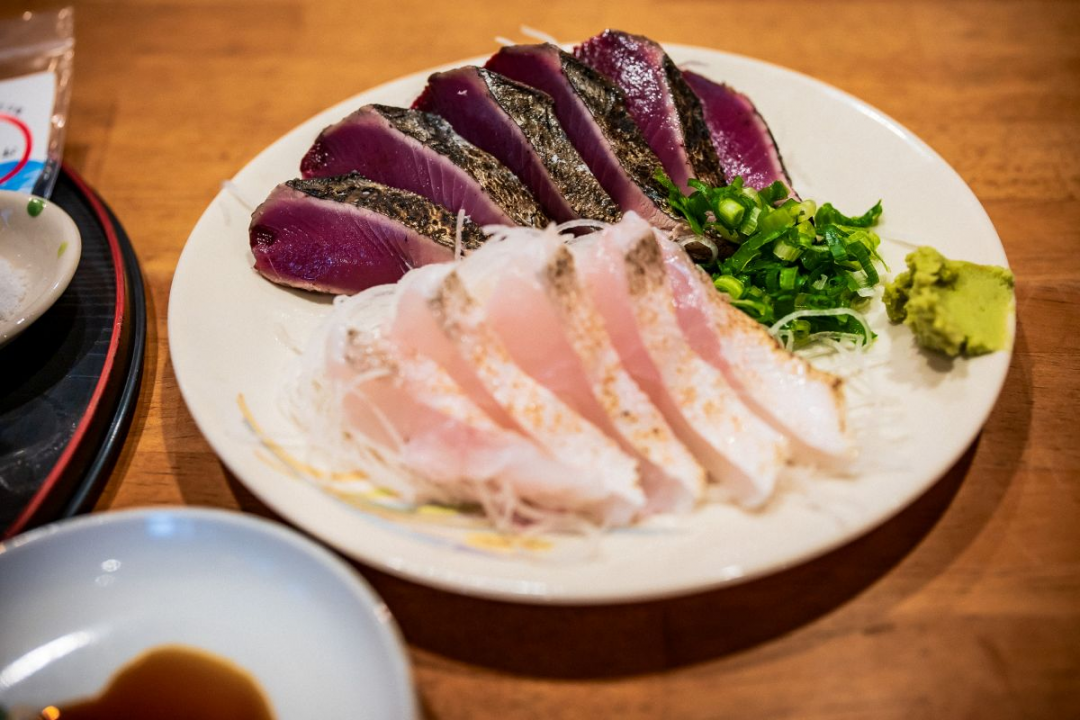
Kochi’s lengthy coastline, combined with favorable fishing currents, has long made Kochi legendary for its fresh seafood, particularly the katsuo, a type of tuna also known as bonito, which is a key ingredient in Japanese cuisine. Dried katsuo is used as a seasoning and in the production of umami-rich dashi broth, used in common dishes from ramen soups to miso paste. Katsuo has been such an important aspect of Kochi’s culture that katsuo fish bones have been found in ruins dating back over 3,000 years.
In Kochi, freshly caught katsuo is the star ingredient in one of the prefecture’s most famous dishes, katsuo tataki, a form of sashimi that has been slightly seared over a straw-fueled fire. The smoke enhances the flavor of the fish while the searing enhances the texture. Katsuo tataki is served on its own with simple condiments that can be combined to personal tastes: sea salt, garlic slices, wasabi, and ponzu (a light, citrusy soy sauce). The secret to Kochi’s katsuo tataki is in its freshness; the fish doesn’t have time to develop a fishy flavor when eaten so quickly after being caught.
Tosa-Kure Station
On route to Shimanto, make a brief stop at Tosa-Kure Station in Kure, a coastal town known for its fishing port and local fishermen who still treasure the age-old ippon-zuri (pole-and-line) style of catching katsuo. Although more time-consuming than using mass-catching methods, ippon-zuri virtually guarantees the highest quality of fish.
Kure Taisho-machi Market
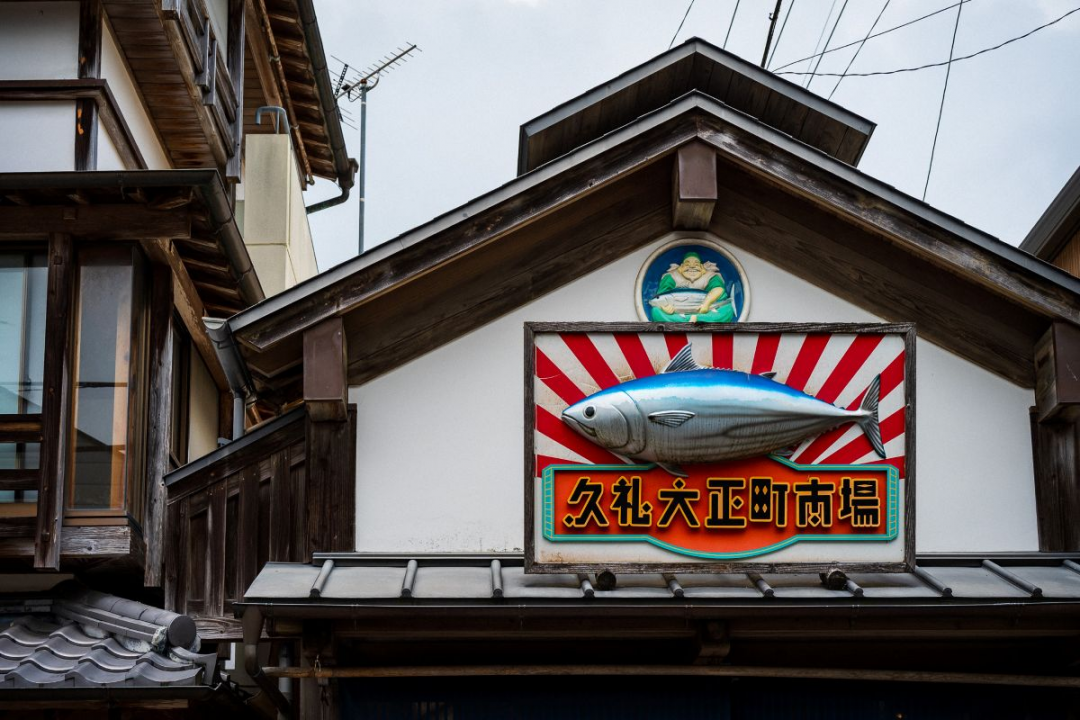
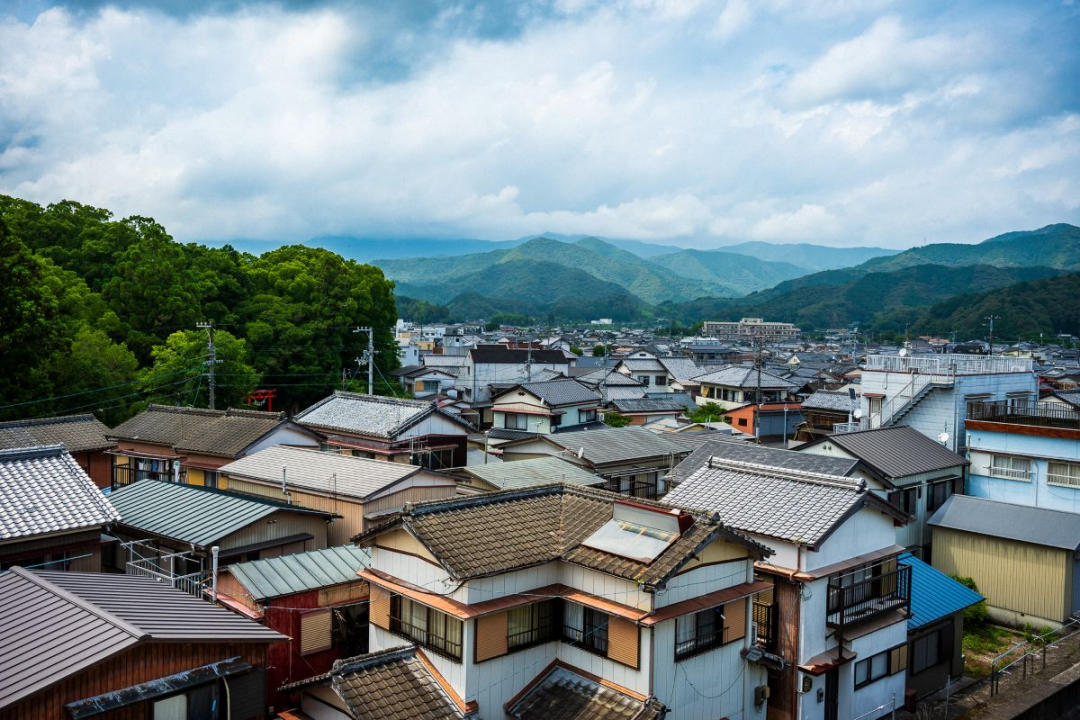
Exterior view of Kure Taisho-machi Market near Tosa-Kure Station
From Tosa-Kure Station, it’s about a 10-minute walk to Taisho-Machi Market, a lively place in this small town, where locals and tourists alike come to shop for food products and eat some of the freshest katsuo and other fish in the area. At the far end of the market from the street is Tanaka Sengyoten, a fish shop that has been in business for over 100 years. The motto at Tanaka is “No Katsuo, No Life,” and indeed, you haven’t really lived until you taste the freshly prepared katsuo tataki from this nationally famous shop. Apart from the regular condiments, Tanaka offers its own secret sauce that brings out the fresh flavors of their tataki.

Tanaka Sengyoten Restaurant’s Katsuo no Tataki Set

Kure Taisho-machi Market and the Kure Port area
Just down the road from Taisho-Machi Market is the ancient, weathered Kure Hachimangu Shrine, where fishermen go to pray for safe voyages and abundant catches. Across the road, the local tsunami evacuation tower doubles as an observation deck with a spectacular view of the port and sea.
Shimanto Pork
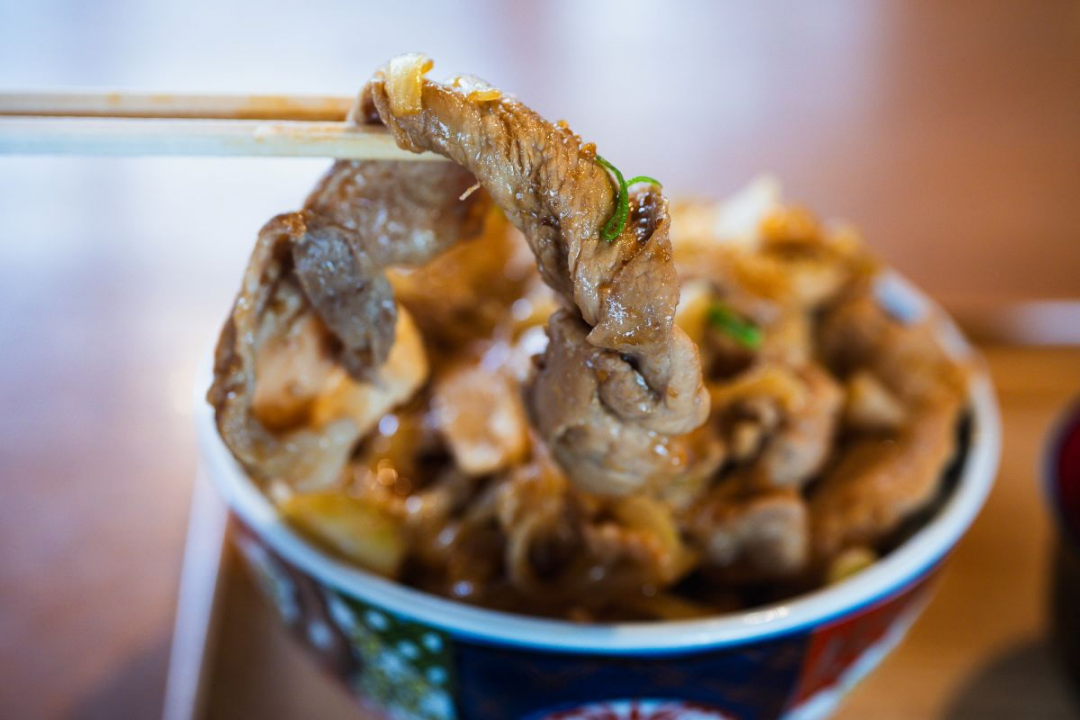
Grilled Garlic Pork Bowl at Mikaku
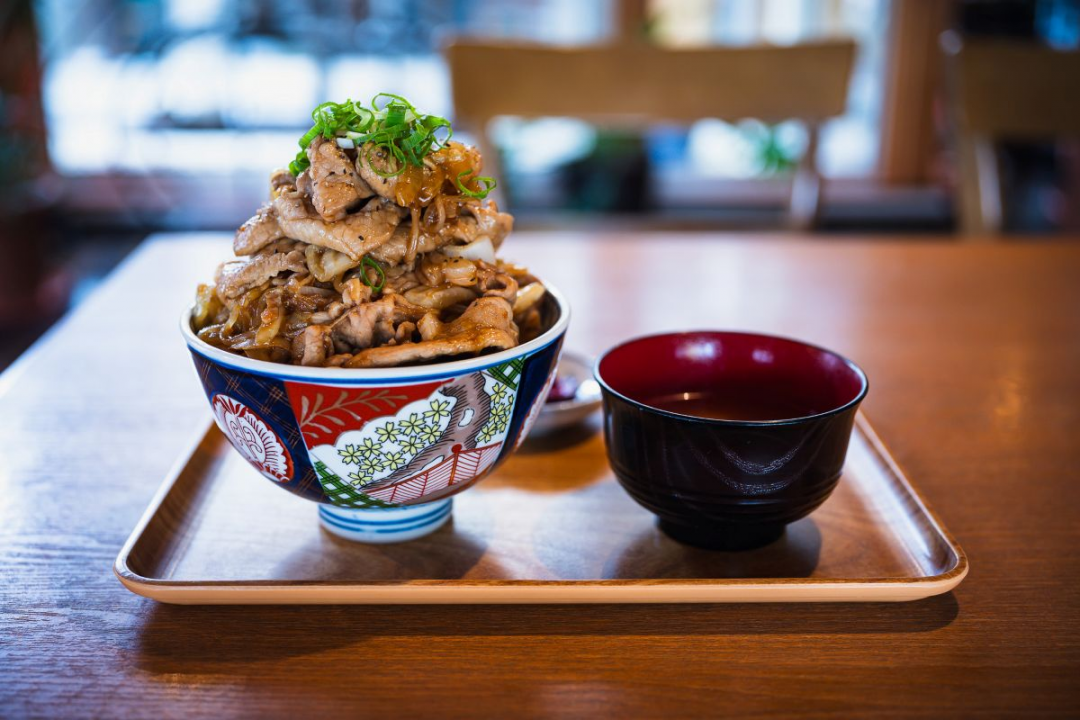 Further along the Dosan line, you can make a stop at Kubokawa Station for a taste of another local specialty: Shimanto Pork. These pigs are raised on farms in the town of Shimanto and fed specific diets that affect the flavor and fat content of the meat. Pigs raised on local Niida rice are tender and juicy, while those fed barley, chestnuts, and kenpi (a snack made from sweet potatoes) have a sweeter flavored meat.
Further along the Dosan line, you can make a stop at Kubokawa Station for a taste of another local specialty: Shimanto Pork. These pigs are raised on farms in the town of Shimanto and fed specific diets that affect the flavor and fat content of the meat. Pigs raised on local Niida rice are tender and juicy, while those fed barley, chestnuts, and kenpi (a snack made from sweet potatoes) have a sweeter flavored meat.Mikaku Restaurant
There are various ways to enjoy Shimanto Pork: thinly sliced in a shabu-shabu hot pot, grilled as a pork chop, or breaded and fried as tonkatsu. An 8 minute walk from Kubokawa Station, one of the favorite local styles can be found at Mikaku, which has been in business since 1950.
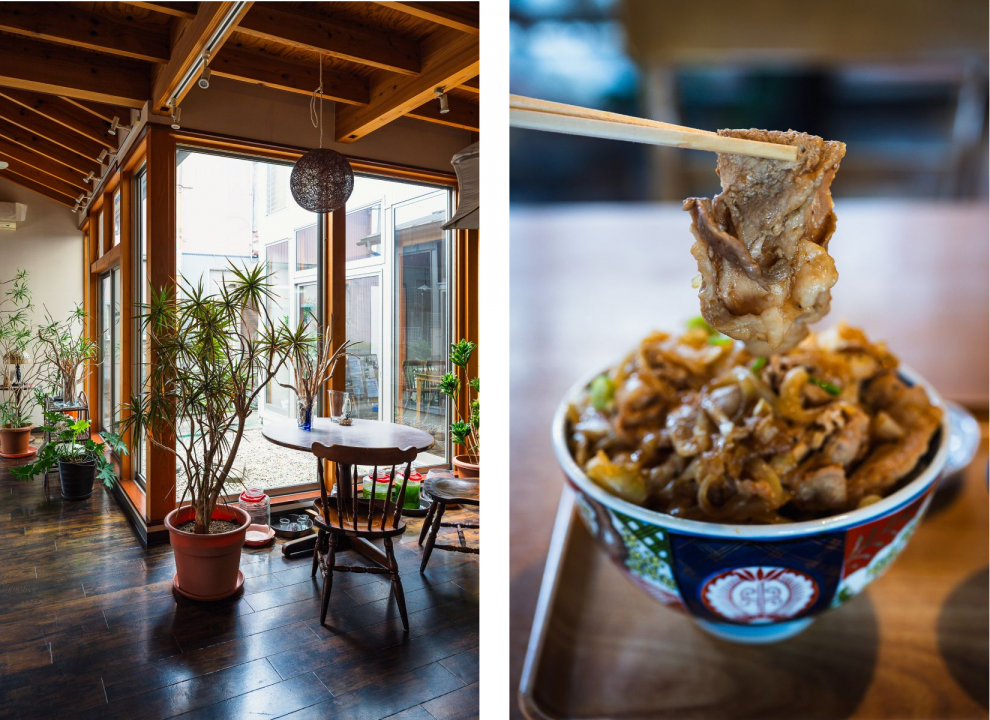
Interior and pork bowl meal at Mikaku Restaurant
Current owner Norihisa Makino serves a mountain of a meal in his Roasted Garlic Pork Bowl with slightly sweet slices of braised pork piled high on a bowl of Niida rice. This huge meal is a godsend for hungry travelers on the nearby Ohenro Pilgrimage route (Temple #37, Iwamoto Temple, is just a few hundred meters away). The rest of us should skip breakfast before attempting to finish this enormous, delicious meal.
Shimanto Pork Bowl Highway
While Mikaku is a standout in restaurants serving Shimanto Pork rice bowls, it is still only one of many. So many, in fact, that the area has created a “Shimanto Pork Bowl Highway,” with 12 establishments serving various styles of pork rice bowls participating. No two rice bowls are exactly the same, so try a few shops to sample the differences in flavors and preparation techniques among Shimanto’s best pork bowl creators.
Fumimoto Sake Brewery
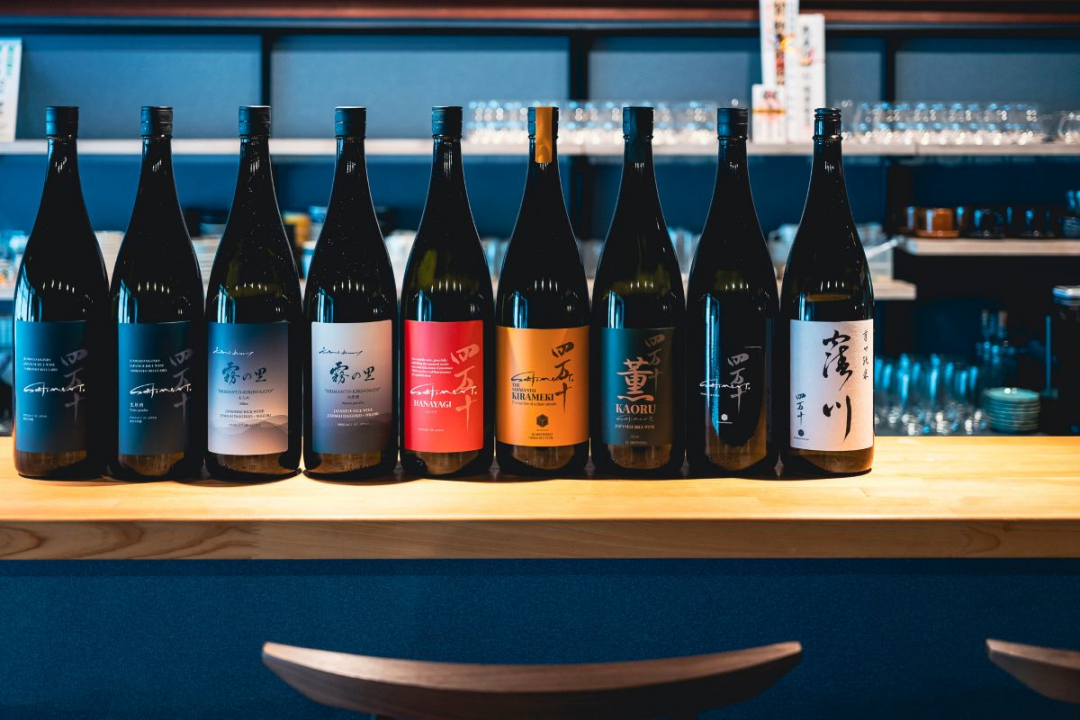
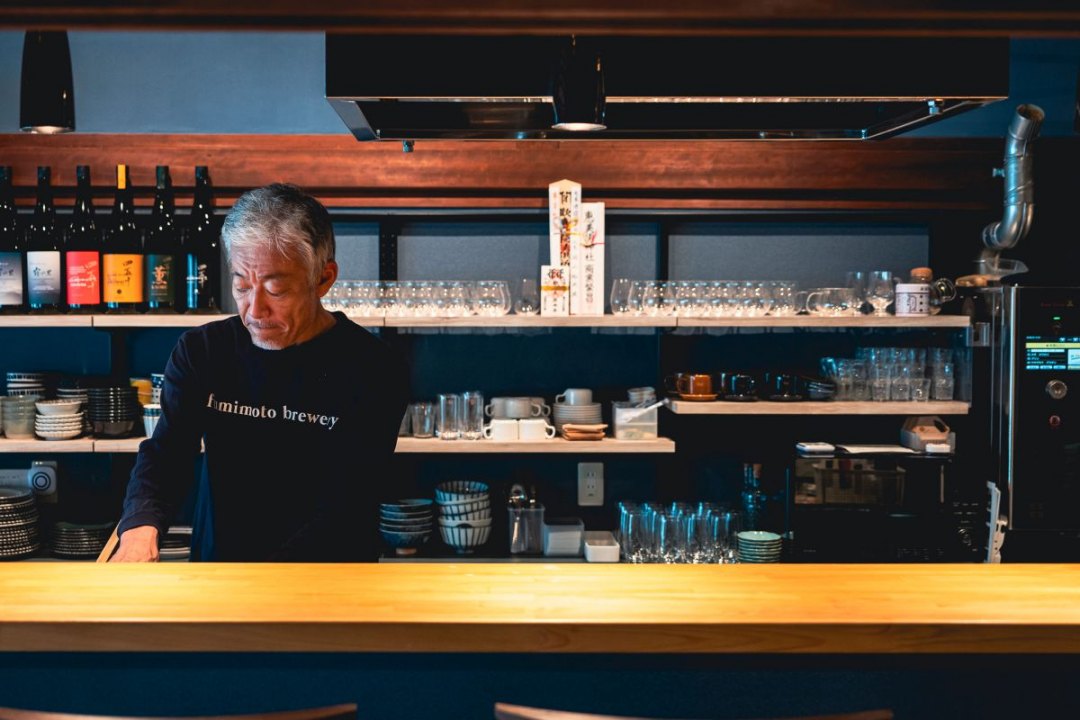
Ishikawa-san at the counter of Fumimoto Brewery
A short walk from Mikaku or 8-minutes from Kubokawa Station is another type of establishment representative of Kochi’s food culture, the Fumimoto Sake Brewery. It is well-known in Japan that Kochi residents love their alcohol, and sake and other types of alcohol have been produced here for years from the clear, clean waters of the Shimanto River. The same waters have fed the rice paddies growing Niida rice, one of the other three key ingredients necessary for sake brewing.
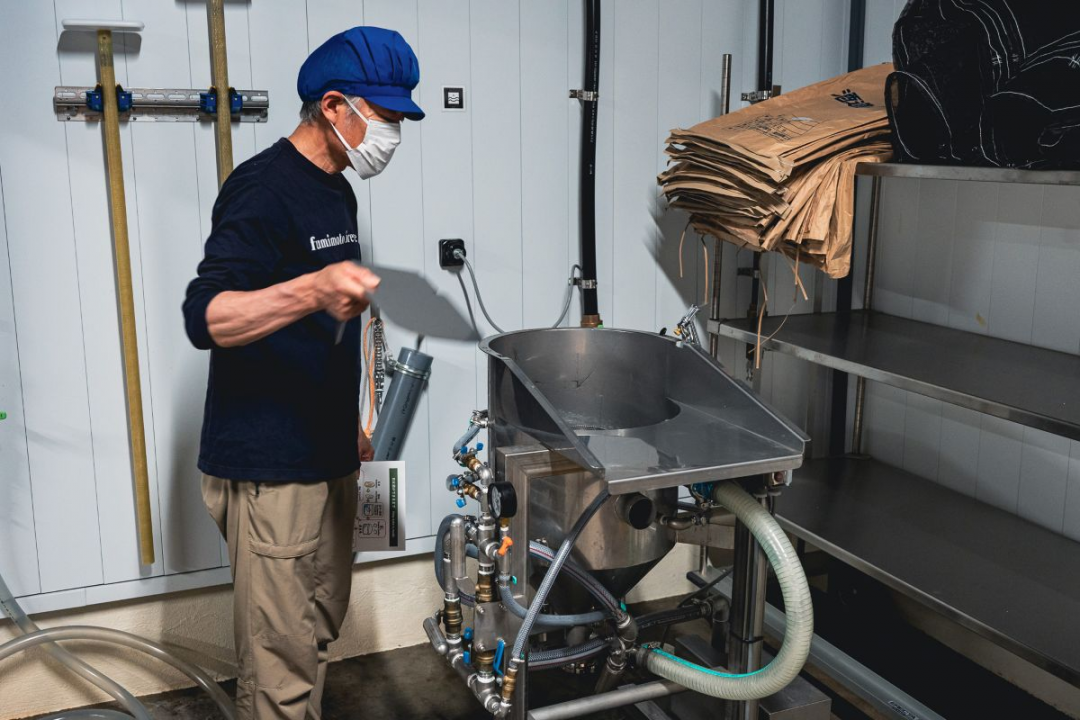
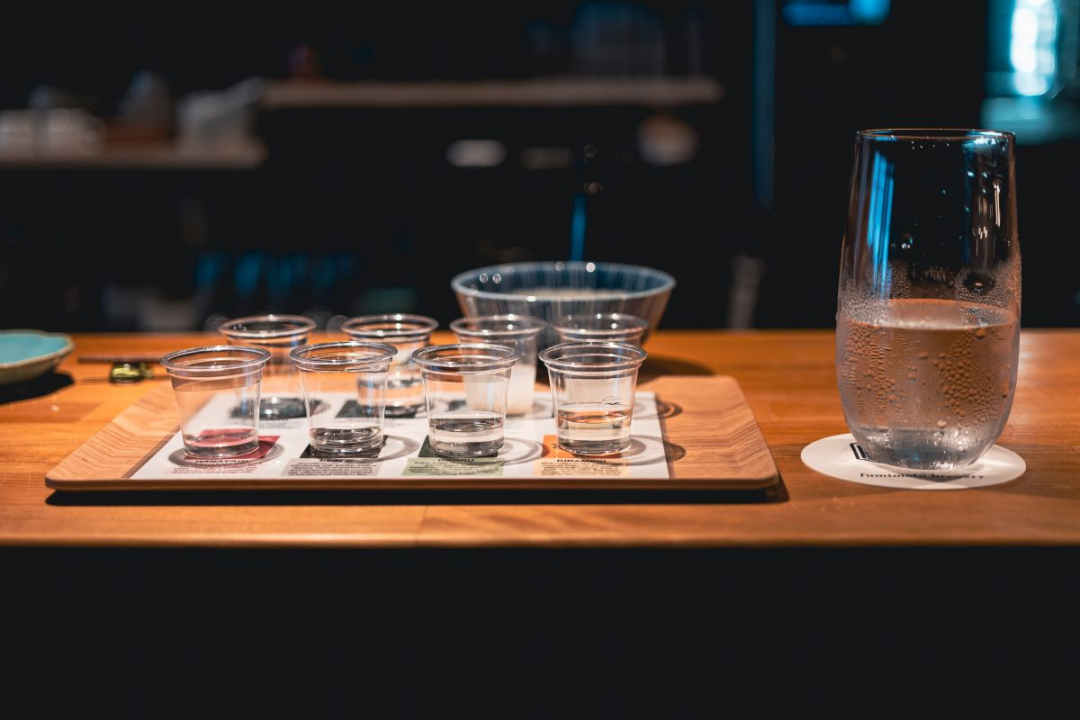
Fumimoto Sake Brewery Tour and Tasting
With the recent boom in Japan for craft beer, whisky, gin, and other types of alcohol, the sake market has seen its struggles in recent years. When Hiroyuki Ishikawa came to Kochi to become the brewmaster at Fumimoto, the small brewery with a 120-year history had already ceased production for several years due to the COVID-19 pandemic. With over 30 years of sake brewing experience, Ishikawa revived the brewing at Fumimoto, creating new sake types that appealed to modern palettes both at home and abroad.
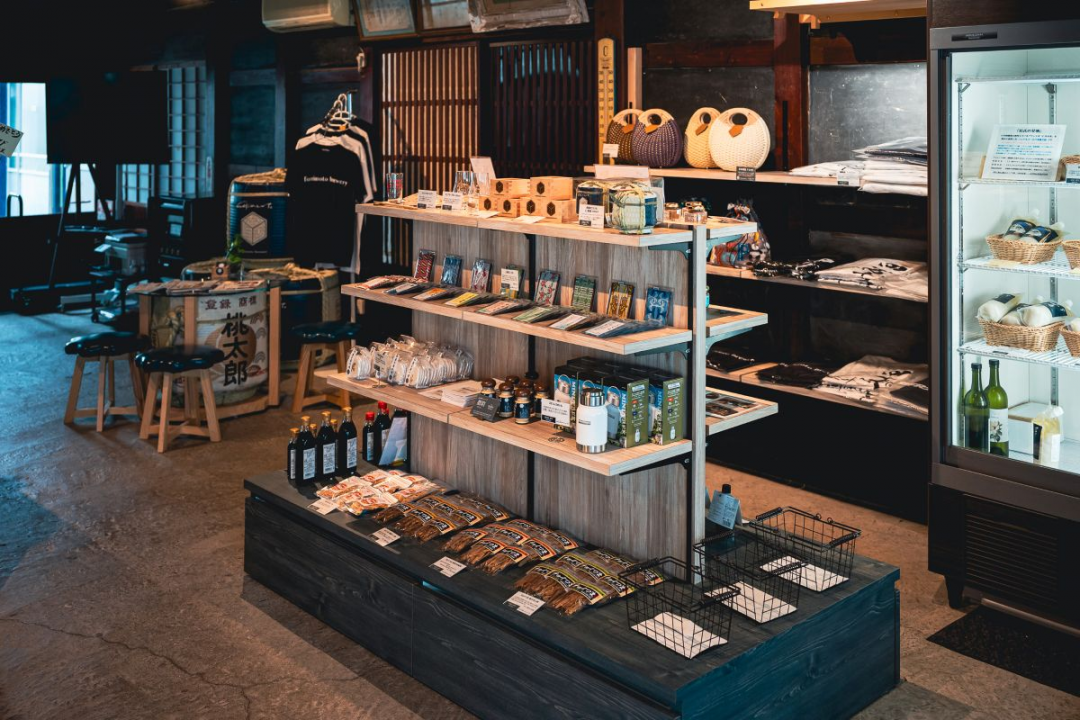
Fumimoto Brewery’s shop
Fumimoto Brewery is now the only sake brewery remaining in Kubokawa, with a mission to share the terroir of Shimanto’s sake ingredients and pristine environment with the world. Modern flavors are now created using koji yeasts, which alter the flavor of the sake during the fermentation process. Kochi Prefecture has its own yeast, CEL24, which is only allowed to be used by sake producers in Kochi. CEL24 is used to create a fruity flavor reminiscent of white wine and is popular with overseas and modern sake enthusiasts.
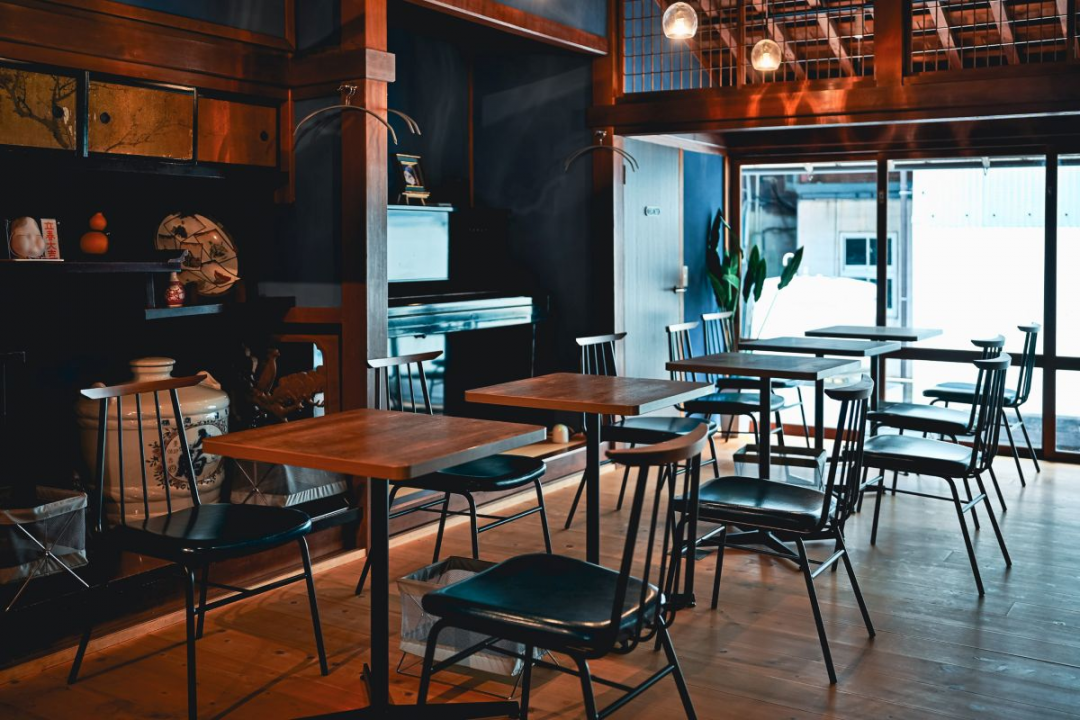
Tasting room
Fumimoto Brewery has undergone a thorough modernization under Ishikawa, including the renovation of a former storehouse into a dining and tasting room. In this atmospheric locale, visitors can taste a flight of Fumimoto’s finest sake, accompanied by a homemade cheesecake crafted from sake kasu, a by-product of sake production that has a cheese-like flavor.
-
Following Japan's Last Free-Flowing River
Shimanto River
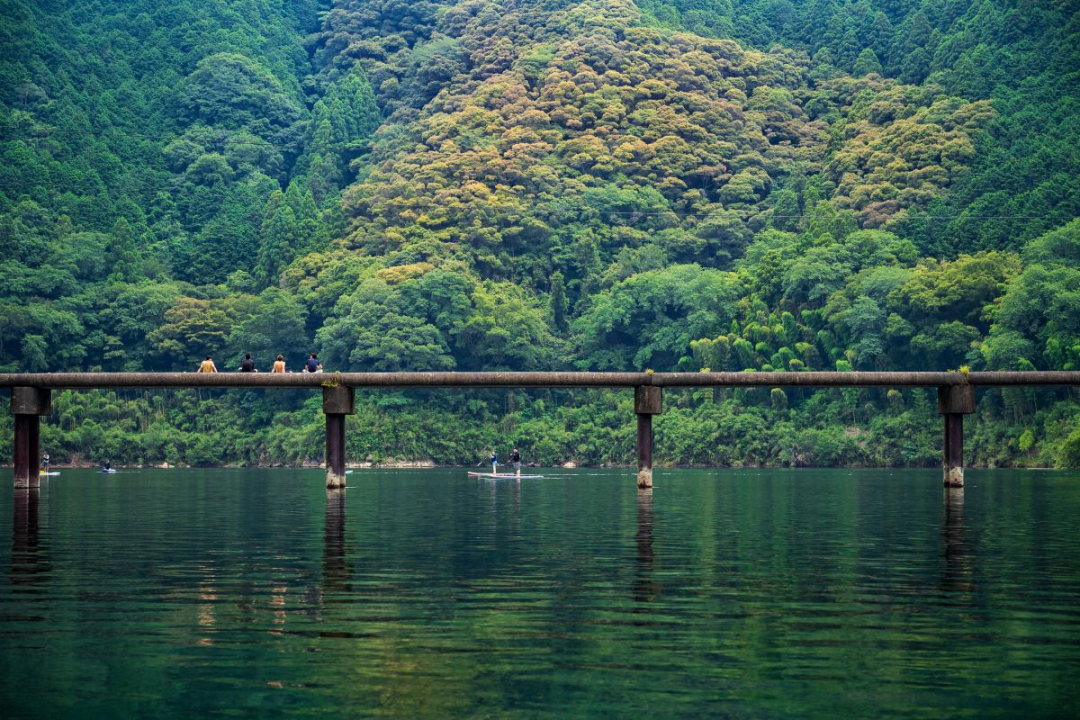
Chinkabashi Bridge seen from a yakatabune cruise
Deep in the mountains of of Kochi’s interior, the Shimanto River begins as a humble spring spilling over the forested slopes of Mt. Irazu. For 196 kilometers it flows, becoming a mighty river, unabated by any dams, until it empties into the Pacific Ocean. Except during periods of heavy rainfall, the river is placid and peaceful, the lifeblood of the region that has provided a source of food and nutrients to the farmers of Shimanto for thousands of years.
Compared to Kochi’s other famous river, the Niyodo, which tumbles through narrow canyons and spills over numerous waterfalls, the serene Shimanto can seem almost boring. In contrast to the adventure travel activities found on the Niyodo, however, the Shimanto offers gentle boat rides, fishing, and a perfect environment to practice canoeing and SUP (stand-up paddleboarding).
Shimanto no Ao Boat Tours

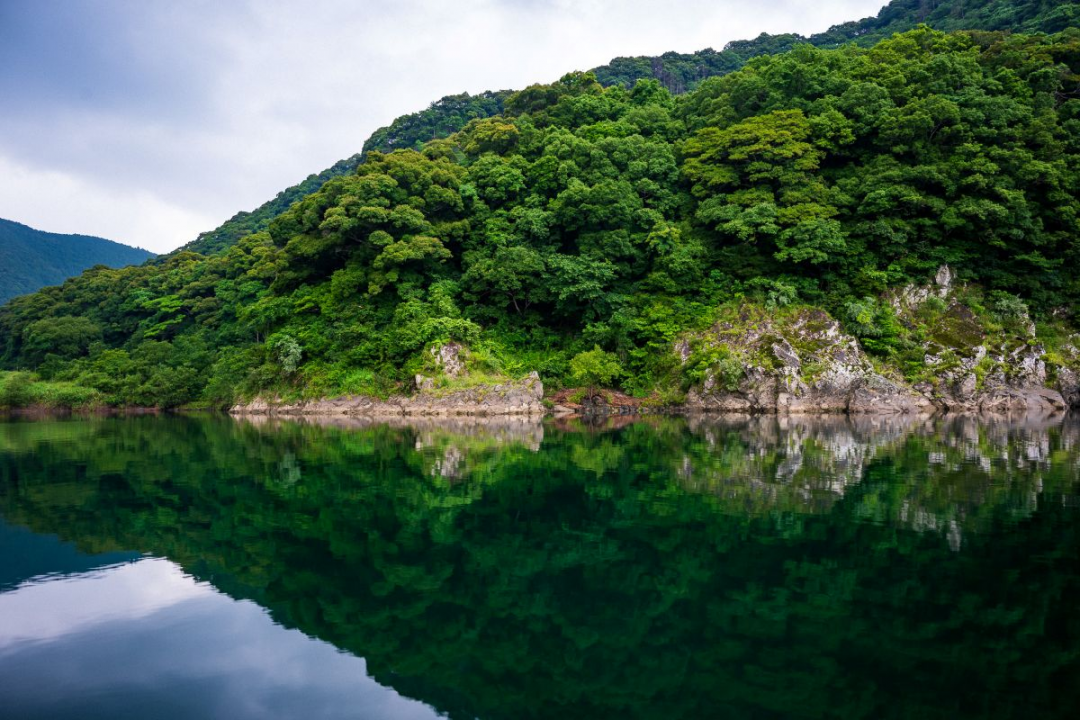
Peaceful views of the river from a yakatabune boat
After getting off the train at Nakamura Station, the main station of Shimanto City, a 20-minute taxi ride takes you to Shimanto no Ao, a boat operating company offering various types of activities along the Shimanto River. The most common activity is a simple river cruise, which can be taken even without an advance reservation. The hour-long cruise takes you on a covered boat up and down the river, passing under two of the unique chinkabashi bridges that cross the Shimanto. These special bridges are designed so that when the river level rises above the bridges during heavy rains and typhoons, the bridges are not washed away.
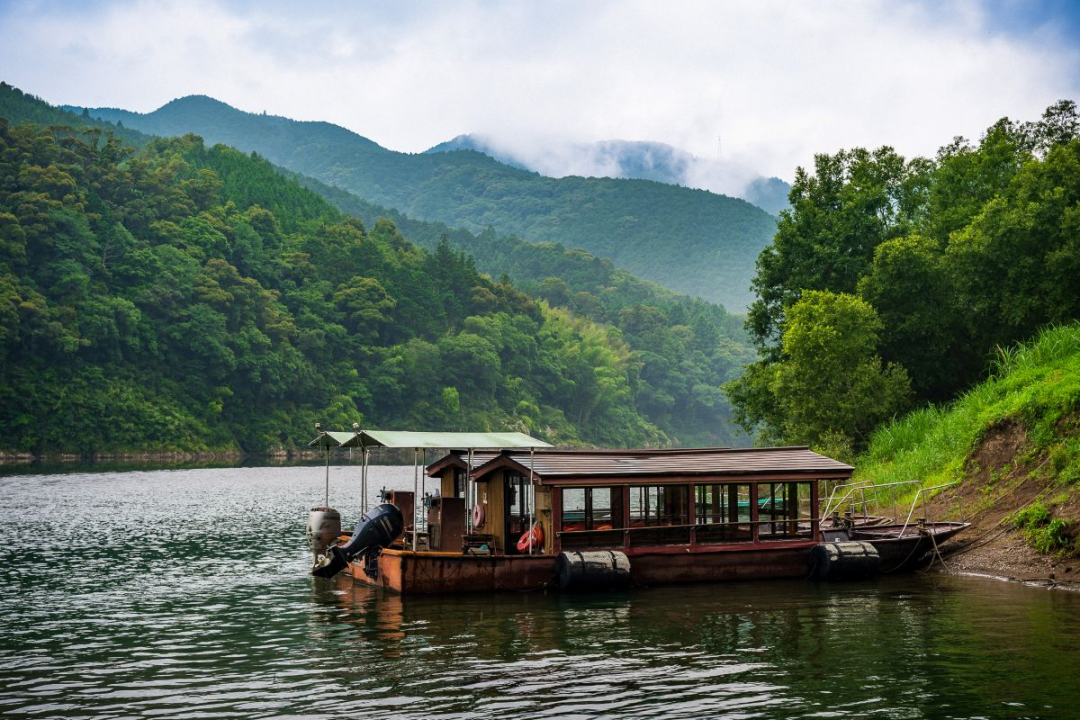
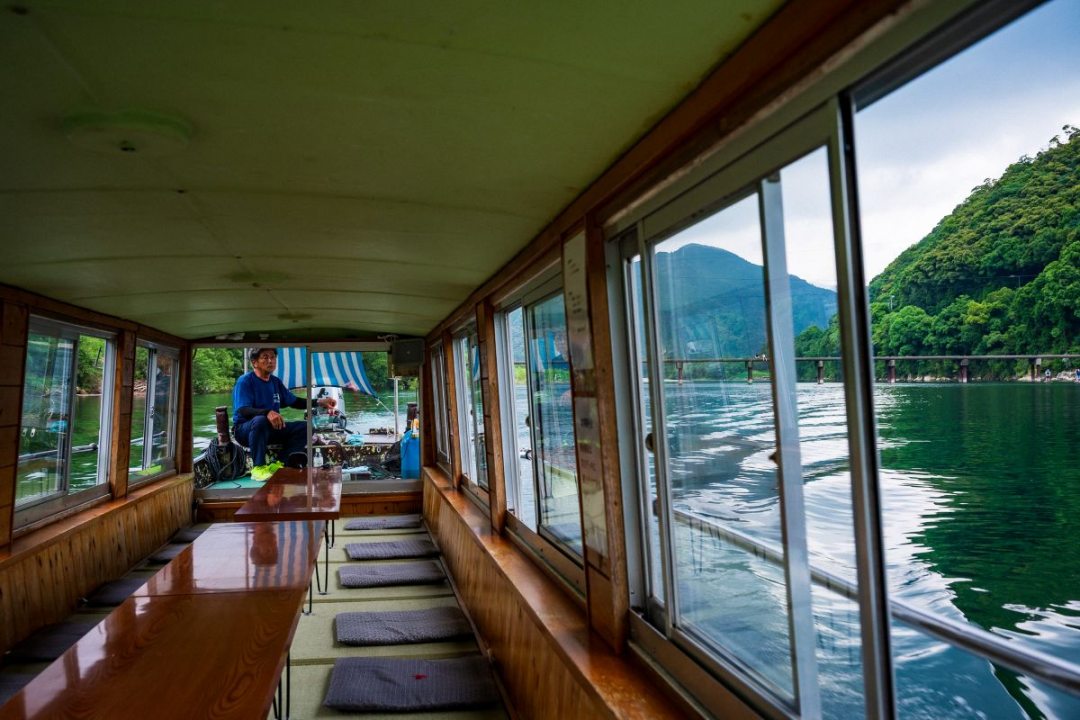
Onboard a yakatabune boat
The river is peaceful along this cruise route and you can look down into the crystal clear water and see the river floor and occasional freshwater fish swimming below. Kochi’s young mountains rise along its banks; there are also green rice fields in the early summer that will eventually turn to shades of gold. Even the occasional summer rain shower isn’t a problem. The covered boat keeps you dry, and you can open the windows and hear the splashing of raindrops on the river’s surface while a cool breeze refreshes you.
With reservations, you can experience the river at a more intimate level. Shimanto no Ao offers several types of seasonal fishing demonstrations, during which traditional fishing methods are used to catch small river fish, shrimp, and eels. If you are fortunate enough to visit during Mid to Late May, you might even be able to book a Firefly viewing tour. On this tour, you can experience the breathtaking sight of hundreds of fireflies fluttering over the pristine water of the river at dusk.
Yasunami Waterwheels
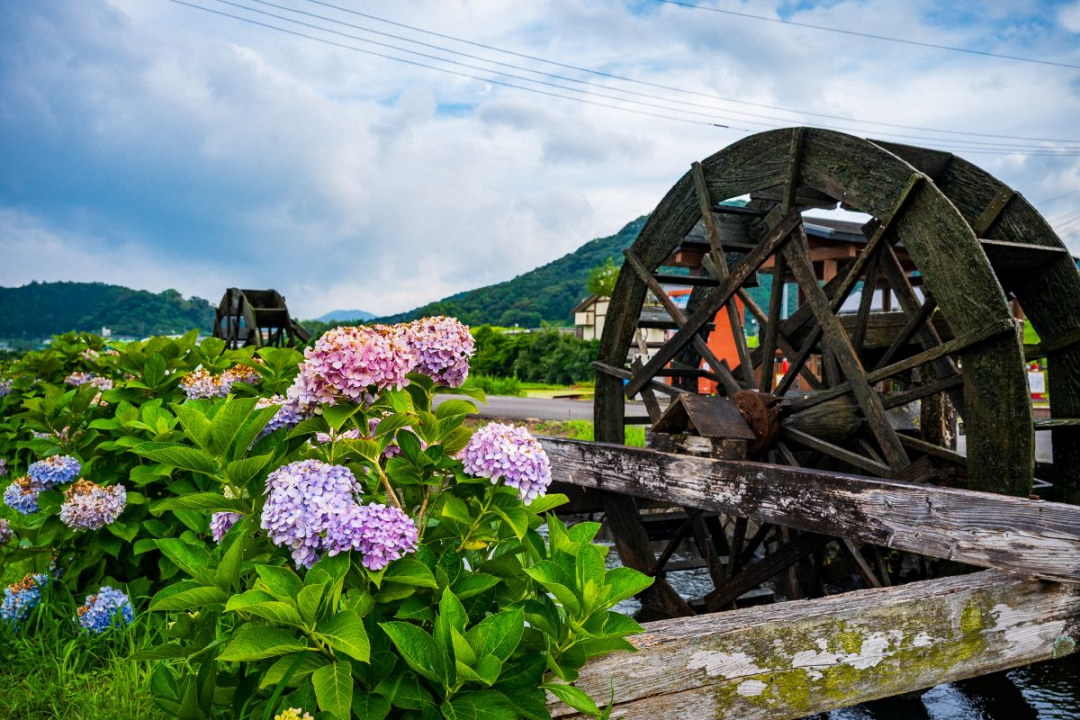
Yasunami Waterwheels
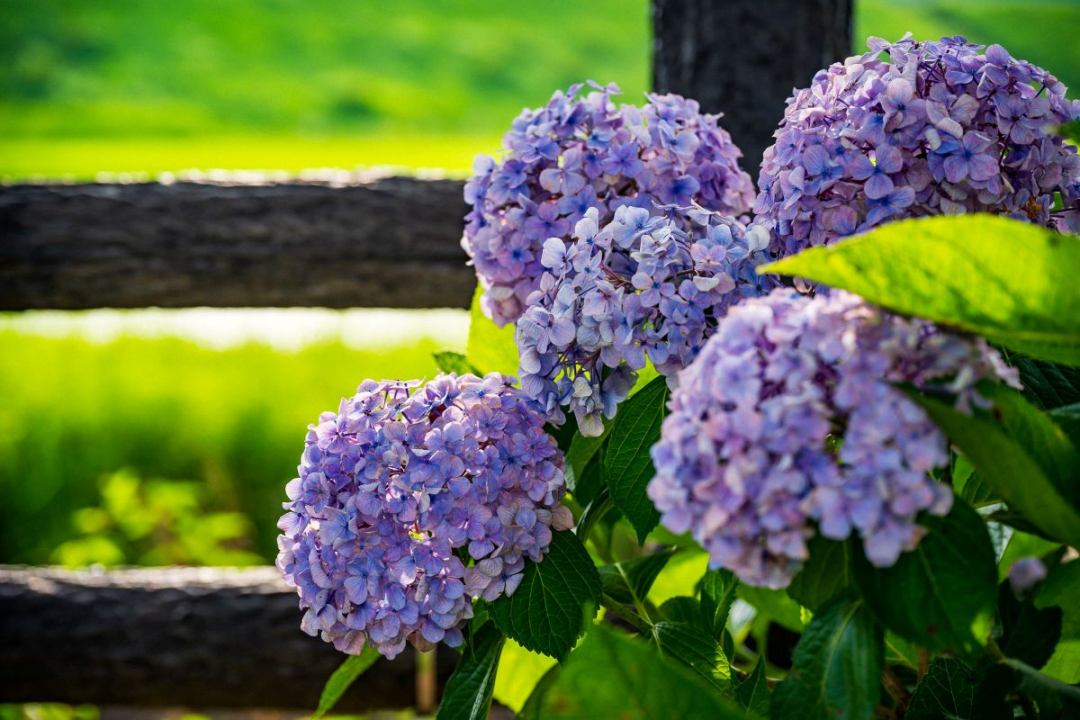
Hydrangeas in June
The river provides more than just a location for outdoor activities and enjoying nature. Its reliable existence over the centuries has provided a livelihood for Shimanto farmers in the form of fresh water and nutrients to grow crops, especially the local Koshihikari rice. Just off of the main river, farmers created artificial distributaries to divert the water to their fields. One particularly picturesque area is the Yasunami Waterwheels, about a 10-minute taxi ride from Nakamura Station.
Historically, waterwheels of this type were constructed along artificial canals like this one to pump water into rice paddies, but over time, such structures were no longer needed and disappeared from the landscape. The Yasunami Waterwheels are maintained here by the local community, mainly for tourism and as a representation of the technology once used in farming. Nonetheless, they create a stunning view of life from another era, especially in late Spring when the hydrangea planted along the waterway burst into colorful hues of pink, purple, and blue.
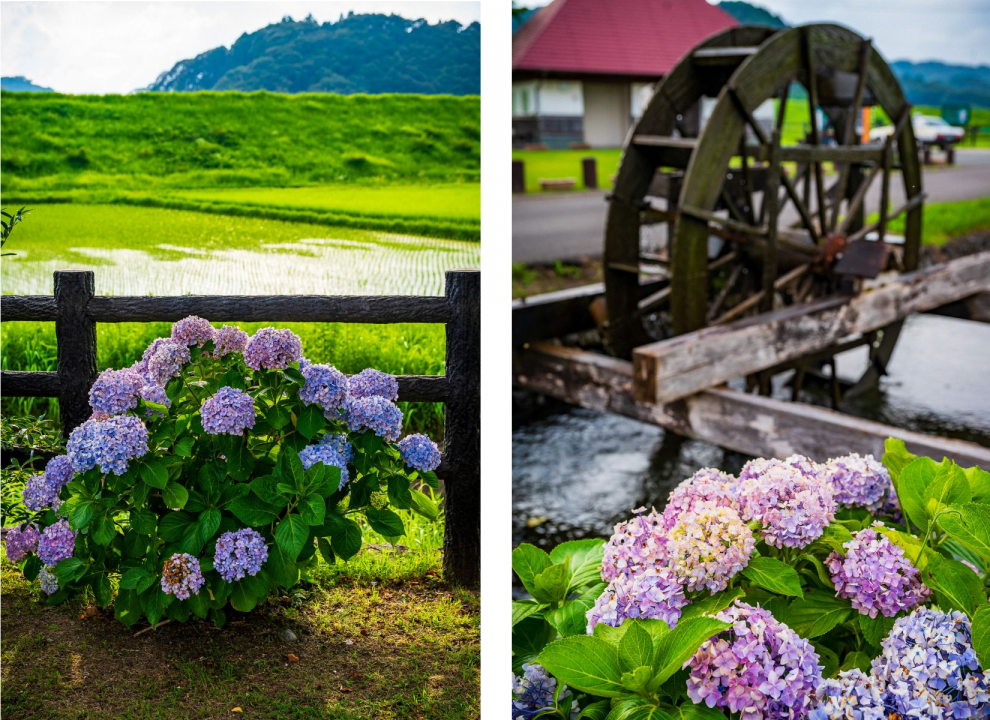
Hydrangeas are in full bloom in the rainy season
Kochi is beautiful year-round, but its mountains are high enough to collect considerable snow in the winter, and driving along the narrow roads can be hazardous. Spring and Autumn are optimal seasons for colorful flowers and fall foliage respectively, but Summer is also a good season to visit, especially for outdoor activities, as long as you remember to cool your heels in the Shimanto River and stay hydrated.
